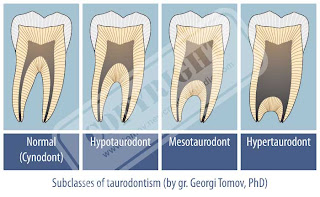It occurs primarily in people of Asian descent and is exhibited by protrusion of a tubercle from occlusal surfaces of posterior teeth, and lingual surfaces of anterior teeth.
Tubercles have an enamel layer covering a dentin core containing a thin extension of pulp. These cusp-like protrusions are susceptible to pulp exposure from wear or fracture because of malocclusion, leading to pulpal complications soon after eruption.
review of the literature reveals an abundance of terms for this anomalous dental structure, the most frequently encountered being: odontome, odontoma (odontome) of the axial core type, evaginatus odontoma (evaginated odontome), occlusal enamel pearl, occlusal tubercle, tuberculum anomalous, accessory cusp, supernumerary cusp, interstitial cusp, tuberculated cusp, tuberculated premolar, Leong’s premolar, and talon cusp (specifically for anterior teeth)
Talon cusp originated as a descriptive term for DE when observed on the lingual surface of anterior teeth because of a resemblance to an eagle’s talon. Currently, DE is the preferred terminology utilized to describe this developmental abnormality, first recommended by Oehlers in 1967
DE is thought to develop from an abnormal proliferation and folding of a portion of the inner enamel epithelium and subjacent ectomesenchymal cells of the dental papilla into the stellate reticulum of the enamel organ during the bell stage of tooth formation









